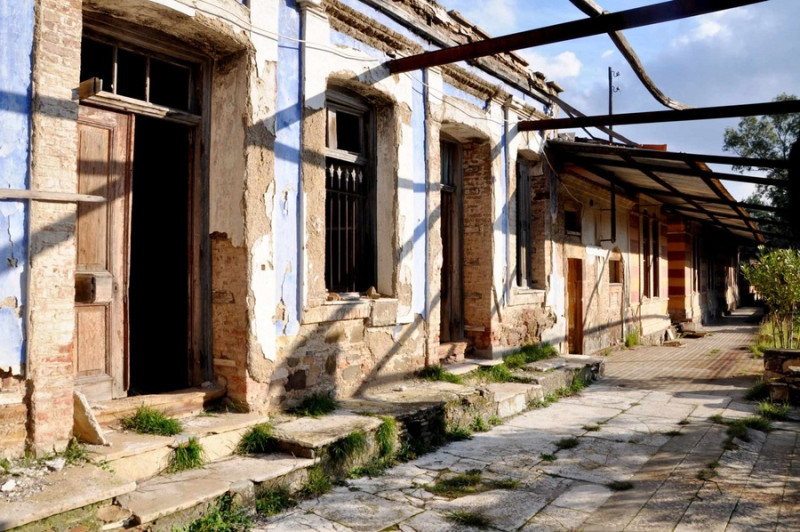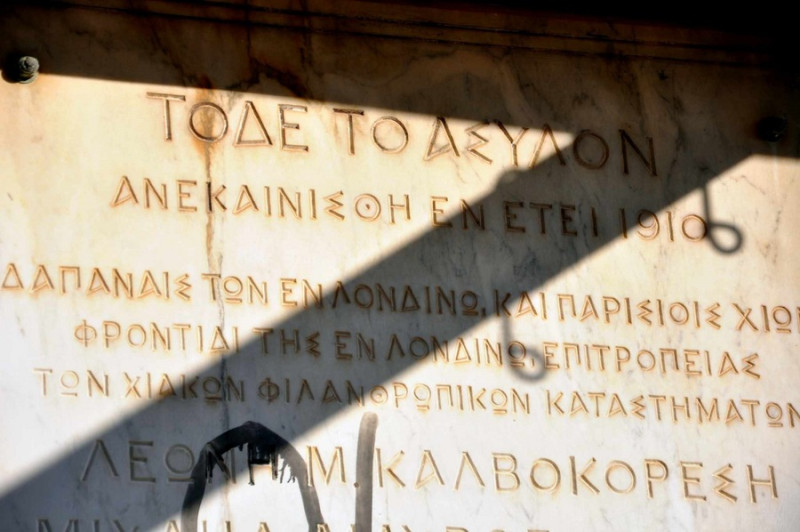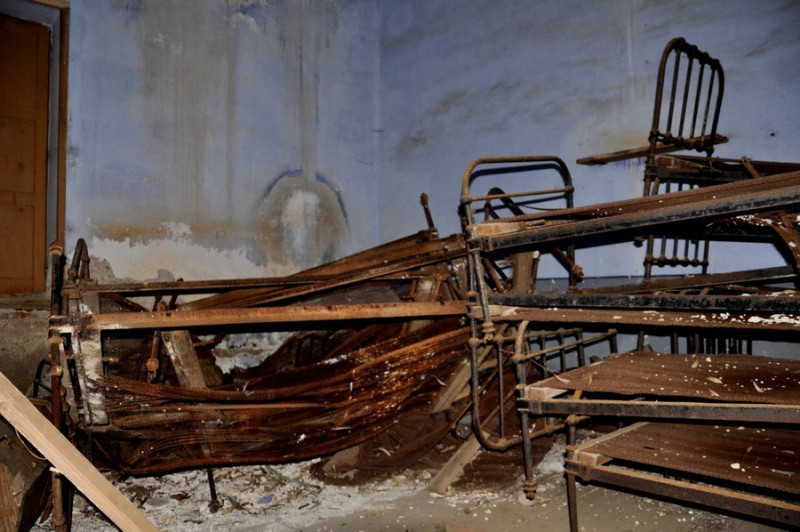The leprosy hospital of Chios operated continuously for six centuries for patients brought there either from Chios or from the islands of the Aegean and regions of Asia Minor
A new beginning for the Lobokoemio of Chios, the nursing Foundation for patients with Hansen’s disease, known for centuries as leprosy, was launched with the signature by the regional governor of the northern Aegean, Konstantinos Mouzouris, of the specifications for the announcement of an international architectural competition for the promotion, reconstruction and utilization of this emblematic and historical space. Which since 2011 has been classified as a protected monument by the central Council of Newer Monuments of the Ministry of Culture.
The leprosy hospital of Chios, which was established under the term Lovokomeio since in the modern Greek dialect the word lova means wound, operated continuously for six centuries for patients brought there either from Chios or from the islands of the Aegean and regions of Asia Minor. In the years after liberation, it was referred to as the “cleanest” and the most “well-run institution”, providing comfort and full medical care to its patients. However, his story is completely intertwined with the history of the island, but also of the prejudice and fear that for centuries caused the hearing of the disease.
The foundation was set up by the Genoese rulers of Chios in 1378 in the Chios valley of Ypakoi, named after the Byzantine church of Panagia Ypakoi, or Panagia tis Epicou. The purpose of the Iustiniani family who ruled Chios was to limit the leprosy that plagued the island that had become a hub commercial port between west and east and its spread affected their economic interests. Almost a century later, in fact, in 1457, Maria Iustiniani, wife of the Genoese ruler of Lesbos, Domenikos Gatelouzos, contracted the disease and was taken to the asylum.
During the years of Ottoman rule on the island, the “Hospital of Saint Lazarus” or euphemistically “Good village”, continues to function with new treatment facilities being built.
In the revolution of 1821 and the massacre of Chios in 1822, the patients suffered the fate of another 23,000 inhabitants of the island who were killed by the Ottoman troops. Exceptions are only five inmates who are hiding in the mountains with the vicar of Lovokomeio Anthimos Poulakis. The Lovokomeio is burned down together with the church of Panagia to be rebuilt almost 10 years later, in 1831, by the priest who survived the massacre.
According to historical sources, in 1845, the Asylum operates with 30 buildings that receive patients without discrimination of nationality or economic status.
50 years after its reopening, in 1881, the Lovokomeio collapses from the devastating 6.5 Richter earthquake that hit the island.
Despite the renovations that follow, the Lovokomeio faces very serious problems until the beginning of the 20th century when important works are carried out with funding from wealthy Chiots of the diaspora. With Saint Anthimos Vaianos as vicar, the institution is organized and literally rebuilt. Rooms with water and drainage, galley and restaurant, laundries and sanitary areas, staff areas. Until 1959, when the then Ministry of Social Welfare suspended its operation and the last eight patients were transferred to the Hospital for Infectious Diseases in Agia Varvara. It should be noted that shortly after being transferred to Athens, these eight patients returned to Chios asking to remain in the Lovokomeio due to – as they argued – the good living conditions there. Protests from the residents of the surrounding villages were heard and the patients returned to Agia Varvara after the intervention of the Police!
Since then the Lobokomeio has been closed forever. Its ransacked premises show an image of abandonment. In some rooms you can still see period beds and mattresses…
The Lovokomeio “came alive” again recently with the signing of the specifications of the announcement of the international architectural competition for its promotion, reconstruction and utilization signed by the regional governor and which took place in the context of the 3rd Chios Festival held by the Northern Aegean Region.
The regional governor, in his short speech, referred to “the obstacles that were overcome, thanks to the political will to reach today’s historic signing day”.
Afterwards, the emeritus professor of Architecture of the Metsovian Polytechnic G. Moraitis spoke. This was followed by speeches by the historian and philologist Michalis Moschos, the former Member of Parliament of Chios doctor Andreas Michaelidis, the writer Yannis Makridakis, and an extremely interesting dialogue between the well-known writer Victoria Hislop and the archaeologist Theodoros Papakostas. The discussion then focused on the history of Lovokomeio and its comparison with Spinalonga in Crete, emphasizing how much more free humane and open to society the living of the patients with Hansen’s disease was in Chios.
Source: Skai
I have worked as a journalist for over 10 years, and my work has been featured on many different news websites. I am also an author, and my work has been published in several books. I specialize in opinion writing, and I often write about current events and controversial topics. I am a very well-rounded writer, and I have a lot of experience in different areas of journalism. I am a very hard worker, and I am always willing to put in the extra effort to get the job done.













